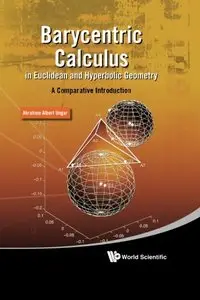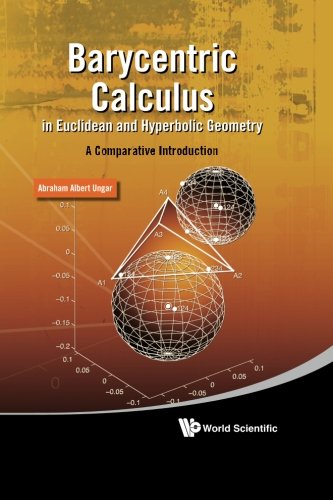Ungar Abraham Albert, "Barycentric Calculus in Euclidean and Hyperbolic Geometry: A Comparative Introduction"
2010 | ISBN-10: 981430493X | 360 pages | PDF | 3 MB
2010 | ISBN-10: 981430493X | 360 pages | PDF | 3 MB
The word barycentric is derived from the Greek word barys (heavy), and refers to center of gravity. Barycentric calculus is a method of treating geometry by considering a point as the center of gravity of certain other points to which weights are ascribed. Hence, in particular, barycentric calculus provides excellent insight into triangle centers. This unique book on barycentric calculus in Euclidean and hyperbolic geometry provides an introduction to the fascinating and beautiful subject of novel triangle centers in hyperbolic geometry along with analogies they share with familiar triangle centers in Euclidean geometry. As such, the book uncovers magnificent unifying notions that Euclidean and hyperbolic triangle centers share.
In his earlier books the author adopted Cartesian coordinates, trigonometry and vector algebra for use in hyperbolic geometry that is fully analogous to the common use of Cartesian coordinates, trigonometry and vector algebra in Euclidean geometry. As a result, powerful tools that are commonly available in Euclidean geometry became available in hyperbolic geometry as well, enabling one to explore hyperbolic geometry in novel ways. In particular, this new book establishes hyperbolic barycentric coordinates that are used to determine various hyperbolic triangle centers just as Euclidean barycentric coordinates are commonly used to determine various Euclidean triangle centers.
The hunt for Euclidean triangle centers is an old tradition in Euclidean geometry, resulting in a repertoire of more than three thousand triangle centers that are known by their barycentric coordinate representations. The aim of this book is to initiate a fully analogous hunt for hyperbolic triangle centers that will broaden the repertoire of hyperbolic triangle centers provided here.



